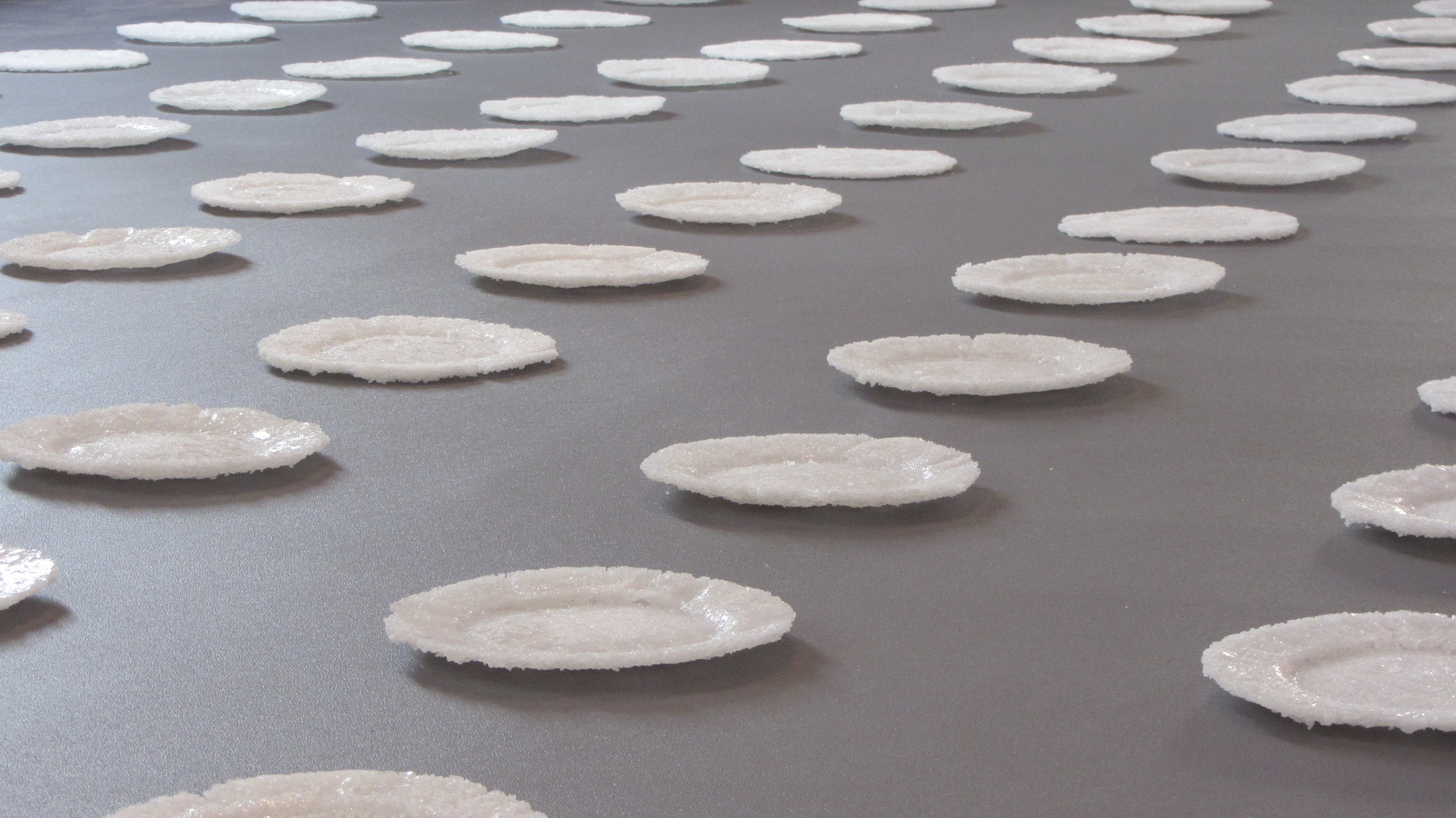Salt Has No Borders
Maltese Rock Salt and Resin, 4 x 7m
Salt can be considered to be a universal ingredient, as its use does not refer to a specific culture or cuisine. Almost every society and culture has a story concerning salt, either about its production, acquisition or its sale. Salt was heavily used as a preservative, especially in times prior to the use of refrigeration. In the culinary world salt is not just used as a flavour enhancer, but also to improve texture, as a nutrient source and as a binder.
Salt is produced either through mining or through evaporation of sea water. In the local context, salt is produced by the use of the many salt pans scattered around the archipelago. Although the salt produced locally from the sea can be considered to be a Maltese product, this ingredient transcends nationality and can be used in the production of all food, irrelevant of the cuisine type.
Besides the use of salt, another common denominator in many cuisines are plates. The generic form of the plate does not just refer to a specific kind of crockery, but rather as a container to place the food which is ready to be eaten.
The empty plate made out of salt is being used as the universal symbol for different cultures.



